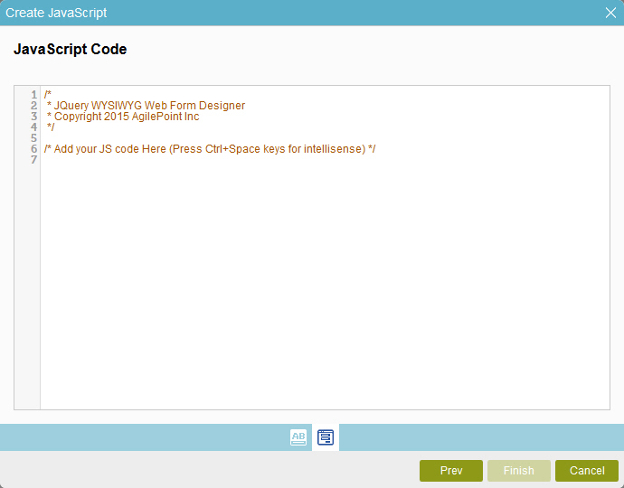The Engine of the Modern Web: Understanding JavaScript’s Core Logic
Every interactive website, from a simple, elegant landing page to a sprawling e-commerce platform, is built upon a foundational trinity: HTML for structure, CSS for presentation, and JavaScript for behavior. While HTML provides the skeleton and CSS dresses it up, JavaScript is the nervous system that brings it to life. It’s the engine that powers dynamic content, validates HTML Forms, and creates the rich, responsive user experiences we’ve come to expect. For anyone embarking on a Web Development journey, whether through an HTML CSS Tutorial or a formal computer science program, mastering the core concepts of JavaScript isn’t just a recommendation—it’s a necessity.
This article will demystify the essential building blocks that form the heart of JavaScript’s power. We will move beyond the surface and dive deep into the mechanics of operators, the nuances of type conversion (coercion), and the critical importance of control flow structures like loops and conditional statements. Understanding these fundamentals is the key that unlocks the ability to write clean, efficient, and powerful code, providing a solid foundation for tackling advanced Frontend Development topics and modern frameworks.
Understanding the Language of Logic: JavaScript Operators
At its most basic level, programming is about manipulating data and making decisions. JavaScript operators are the symbols and keywords that allow us to perform these actions. They are the verbs of the language, enabling everything from simple arithmetic to complex logical comparisons that dictate how an application behaves. A firm grasp of these operators is the first step toward writing meaningful code.
Arithmetic & Comparison Operators: The Foundation of Calculation and Decision
Arithmetic operators are the most familiar, mirroring the functions of a standard calculator. They include addition (+), subtraction (-), multiplication (*), division (/), modulo (%, which returns the remainder of a division), and exponentiation (**). In a real-world scenario, these are used constantly, such as calculating a shopping cart total, determining the percentage of a progress bar, or resizing HTML Elements based on a calculated ratio.
Comparison operators, on the other hand, are the bedrock of decision-making. They compare two values and return a Boolean value: true or false. These include operators like greater than (>), less than (<), and the critically important equality operators. This is where a common pitfall for beginners lies: the difference between loose equality (==) and strict equality (===). Loose equality will attempt to convert the types of the values before comparing them (a process called type coercion), which can lead to unexpected results. For example, 5 == '5' evaluates to true. Strict equality (===), however, checks both the value and the type, meaning 5 === '5' correctly evaluates to false. It is a universal HTML Best Practices and JavaScript best practice to always use strict equality (=== and !==) to prevent subtle, hard-to-find bugs.
The Unseen Force: Type Coercion Explained
Type coercion is JavaScript's automatic attempt to convert a value from one data type to another. While sometimes helpful, as in 'The result is ' + 10 becoming 'The result is 10', it is more often a source of confusion. When JavaScript encounters operators with mixed data types, it follows a set of rules to "coerce" them into a compatible type. For instance, '10' - 5 results in the number 5 because the subtraction operator coerces the string '10' into a number. This implicit behavior is why relying on strict comparison operators is so crucial for predictable code. When you need to convert types intentionally, it's far better to do so explicitly using functions like Number(), String(), or Boolean(). This makes your code more readable and your intent clear, which is a cornerstone of professional Frontend Web development.
From Static to Dynamic: Mastering Program Control Flow

If operators are the verbs, then control flow statements are the full sentences and paragraphs. They allow us to direct the execution of our code, enabling it to make decisions, perform repetitive tasks, and respond dynamically to user input and application state. Without control flow, our code would be a simple, static script that runs from top to bottom without variation. This control is what transforms a static document into an interactive application.
Conditional Logic: The `if...else` Statement and its Variants
The most fundamental control structure is the if...else statement. It allows you to execute a block of code only if a specific condition is met. The syntax is straightforward: an if block runs when the condition is true, and an optional else block runs when it is false. You can chain these with else if to check for multiple conditions sequentially.
A classic real-world scenario is handling user authentication. Based on a user's login status, you can use an if statement to dynamically alter the UI.
if (isUserLoggedIn) {
// Show the user's dashboard and a "Logout" button
dashboardElement.style.display = 'block';
loginButton.style.display = 'none';
} else {
// Show the "Login" and "Sign Up" buttons
dashboardElement.style.display = 'none';
loginButton.style.display = 'block';
}
This simple logic is central to good UX Design, as it tailors the interface to the user's context. For more concise conditional assignments, developers often use the ternary operator (condition ? valueIfTrue : valueIfFalse), and for handling numerous distinct cases, the switch statement offers a cleaner alternative to a long chain of else if blocks.
Repetitive Tasks Made Easy: The Power of Loops
Loops are designed to execute a block of code repeatedly as long as a condition remains true. They are indispensable for working with collections of data, such as arrays or lists of items retrieved from a server.
- For Loop: The classic loop, perfect when you know the exact number of iterations. It consists of an initializer, a condition, and a final expression (e.g., an incrementer). A common use is to iterate over an array to generate HTML Tags for a list of products.
- While Loop: This loop continues as long as its condition is true. It's useful when the number of iterations is unknown beforehand, such as fetching data in chunks until there's no more to retrieve.
- Do-While Loop: Similar to the
whileloop, but it guarantees the code block will execute at least once, as the condition is checked after the first iteration.
Modern JavaScript also provides more declarative looping constructs like forEach, map, and for...of, which are often preferred for their readability when working with arrays. A common pitfall with loops is creating an "infinite loop" by forgetting to update the condition variable, which can freeze a browser tab. Careful implementation is key to leveraging their power effectively.
The Symphony of the Frontend: A Practical Integration
Understanding these concepts in isolation is one thing; seeing how they work together to build a functional piece of a website is another. The true power of Web Development is realized when HTML's structure, CSS's style, and JavaScript's logic combine to create a seamless user experience. Let's consider a practical example: a simple "To-Do List" application.
Manipulating the DOM with Control Flow
This application demonstrates how JavaScript's core logic directly interacts with the Document Object Model (DOM)—the browser's representation of your HTML.

1. The HTML Structure: We start with clean, Semantic HTML to define the page's content. This provides a solid foundation for both styling and scripting. Using semantic HTML5 Features like <main>, <section>, and <form> improves both readability and Web Accessibility.
<main>
<h1>My To-Do List</h1>
<form id="todo-form">
<input type="text" id="todo-input" placeholder="Add a new task">
<button type="submit">Add</button>
</form>
<ul id="todo-list"></ul>
</main>
2. The CSS Styling: We use CSS Selectors to target the elements. A modern Web Layout can be easily achieved with CSS Flexbox or CSS Grid to align the form elements and list items. This approach is fundamental to Responsive Design, ensuring the layout adapts gracefully to different screen sizes, following a Mobile-First Design philosophy.
3. The JavaScript Logic: Here, our core concepts come into play. We use an event listener to detect form submission. Inside the handler, an if statement checks if the input is empty. If not, a new list item is created and appended to the list. A for loop could be used to render a pre-existing list of tasks when the page loads.
const form = document.getElementById('todo-form');
const input = document.getElementById('todo-input');
const list = document.getElementById('todo-list');
form.addEventListener('submit', function(event) {
event.preventDefault(); // Prevent page reload
const taskText = input.value.trim();
// Use an 'if' statement for validation
if (taskText !== '') {
const newItem = document.createElement('li');
newItem.textContent = taskText;
list.appendChild(newItem);
input.value = ''; // Clear the input field
}
});
This simple example perfectly illustrates the interplay: HTML defines what the content is, CSS defines how it looks, and JavaScript, using conditional logic and event handling, defines how it behaves.
Writing Clean, Efficient, and Accessible Code
Mastering the syntax is only half the battle. Professional developers strive to write code that is not only functional but also maintainable, performant, and accessible to all users. Adhering to best practices ensures your applications are robust and scalable.

Code Readability and Modern Practices
Clean code is self-documenting. Use meaningful variable names (e.g., isUserLoggedIn instead of flag), and consistently use strict equality (===) to avoid coercion-related bugs. Embrace modern JavaScript (ES6+) features like let and const for variable declarations over the older var, as they provide better scope control. While frameworks like **Bootstrap** or **Tailwind CSS** can speed up styling, and CSS preprocessors like **SASS** can organize your stylesheets, the underlying JavaScript logic must remain clean and efficient.
Performance and Web Accessibility (A11y)
Performance is a key aspect of good UX Design. Inefficient loops, especially those that manipulate the DOM on every iteration, can slow down your website. For example, when adding many items to a list, it's more performant to create them in memory and append them to the DOM in a single operation rather than one by one.
Furthermore, it is our responsibility to build for everyone. Web Accessibility ensures that people with disabilities can use the web. When JavaScript dynamically adds or changes content, it can confuse assistive technologies like screen readers. Use ARIA Labels (Accessible Rich Internet Applications) to provide context for non-semantic or interactive elements. Following W3C Standards is not just a best practice; it's essential for creating an inclusive digital world.
Conclusion: The Unwavering Importance of the Fundamentals
The world of Web Development is vast and ever-evolving, with new frameworks, tools, and techniques emerging constantly. However, beneath all the layers of abstraction lies a core set of principles that remain unchanged. The logic of operators, the flow of control, and the careful management of data types are the universal truths of programming. By investing the time to deeply understand and master these foundational JavaScript concepts, you are not just learning a language; you are learning the art of building dynamic, interactive, and robust web experiences. This solid foundation will empower you to learn any new technology with confidence and write code that is not only functional but also elegant, efficient, and built to last.




